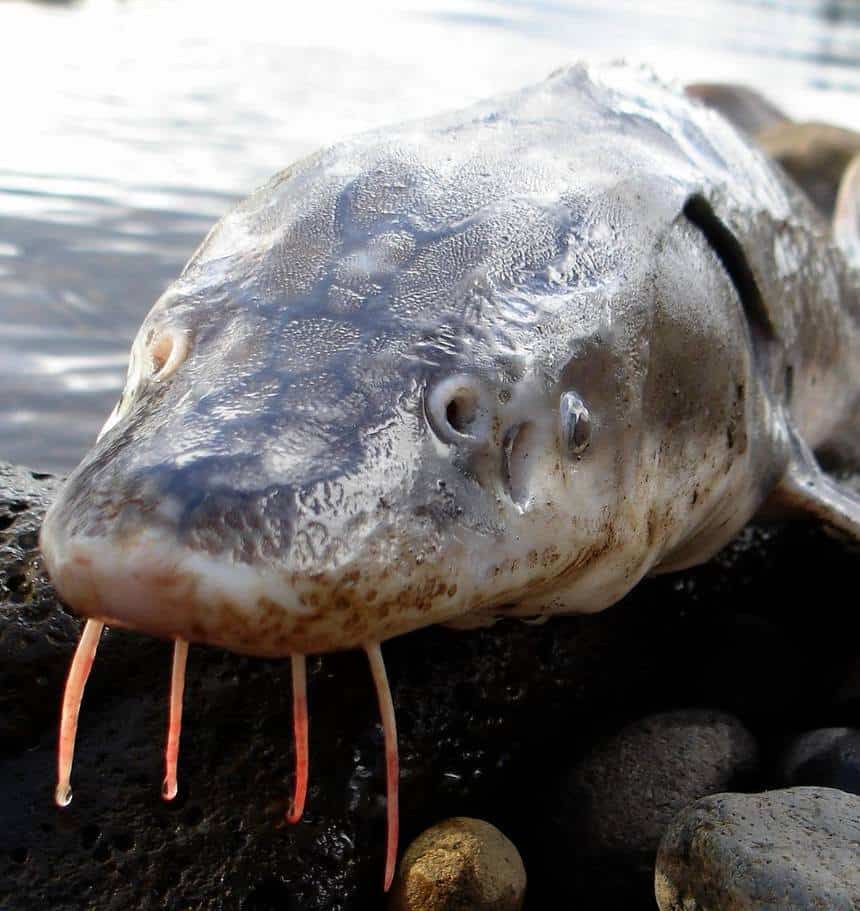
Delaware Riverkeeper threatens to sue three watershed states over Atlantic sturgeon killings
| July 22, 2024
An environmental group is threatening to sue three Delaware River watershed states — New York, New Jersey and Delaware — over what it contends have been inadequate safeguards to protect an endangered species of fish, the Atlantic sturgeon.
The group, the Delaware Riverkeeper Network, has taken a preliminary step in filing a federal lawsuit against the states by putting them on notice with a 60-day warning.
With its rows of bony plates, shark-like tail and whisker-like projections on its snout, the Atlantic sturgeon is not going to win any beauty contests among fish species. But in the Delaware, it has come to be seen as a barometer of the river’s health.
Though it does not face the harms of overfishing of more than a century ago, sturgeon remain endangered and now face threats of entanglement in fishing gear, habitat degradation, vessel strikes and impediments, such as dams.
“The Delaware River’s population of Atlantic sturgeon is known to be the most imperiled in the world,” said Maya van Rossum, the Delaware Riverkeeper and leader of the network.
At the heart of the threatened litigation are cases in which sturgeon have been captured or killed as a byproduct of commercial fishing.
That is, the sturgeon are not the main target of the fishing — the Endangered Species Act prohibits that — but are killed incidentally as commercial fishing operations scoop up other fish.
Further, the Riverkeeper says the states have run afoul of federal law by failing to secure “incidental take permits,” which are issued by the National Oceanic and Atmospheric Administration Fisheries.
“According to scientists, we have less than 250 spawning adults left,” Maya van Rossum said. “And yet, these three states and the federal government have been turning a blind eye for years as the Atlantic sturgeon of the Delaware and other river systems are killed as bycatch.”
A permit application would require filing a habitat conservation plan that would detail anticipated impacts resulting from the taking, as well as ways to mitigate and minimize those effects.
Trawling takes in unexpected catches
While sturgeon are known to populate the Delaware River, the Riverkeeper Network said in its letter that sturgeon might be at the greatest risk of being incidentally caught in the New York and New Jersey region, compared to the entire Atlantic coast.
“The coastal subregion of New York and New Jersey is estimated to recapture 30 percent of tagged Atlantic sturgeon whereas the entire United States coast is only estimated to recapture between eight to 14 percent,” the network wrote.
The group said that New York limits trawling only to a 1.5-mile arc of coastline around navigable inlets. Trawl net and gill-net fisheries are often what cause the unplanned taking of Atlantic sturgeon to happen, the network said.
These approaches to fishing cannot distinguish which marine life gets caught.
A huge trawl net is dragged on the water floor, catching everything in its path. A gill-net is anchored to the bottom of the ocean or riverbed, creating a wall that entraps fish by their gills as they try to swim through.
Precise mortality rates are difficult to come by
In its letters of intent to sue, Riverkeeper said imprecise figures are available about how many Atlantic sturgeon are killed as a result of incidental catches, noting that the numbers are only estimates “based on current and past experiences of observable occurrences.”
The Atlantic States Marine Fisheries Commission projects that a total annual mortality of 4 percent of Atlantic sturgeon as result of bycatch would put recovering populations at risk.
“Alarmingly, approximately 6 percent cumulative mortality was already estimated for tagged subadult sturgeon during relatively short periods of 12 to 17 weeks in late spring, and total annual mortality estimates were twice this level,” the Riverkeeper Network wrote, citing research published in the Journal of Applied Ecology in 2017.
Read more: How wastewater treatment plants are both a problem and solution for the plight of sturgeon
Agencies targeted
The letters of intent to sue, dated July 9, were sent to the New York State Department of Environmental Conservation, the Delaware State Department of Natural Resources and Environmental Control, and the New Jersey Department of Environmental Protection.
The New Jersey department declined to comment. The Delaware department did not respond to a request for comment.
The New York department said in a statement: “DEC is aware of Delaware Riverkeeper’s letter of intent. DEC is committed to the protection and restoration of the Delaware River basin and all the species it supports.”
Read more: EPA seeks to improve dissolved oxygen levels and water quality in urban stretch of Delaware River
Heightened attention on the species
The Riverkeeper Network’s threatened legal action comes amid a backdrop of heightened attention about the preservation and propagation of sturgeon.
The federal Environmental Protection Agency last fall became the lead agency spearheading water-quality criteria for dissolved oxygen in the Delaware River Basin.
That development came after environmental groups complained that the regulatory agency, the Delaware River Basin Commission, had been moving too slowly to respond to the plight of the sturgeon.
Those fish, like all fish, need oxygen in the water. In the summer months especially, the dissolved oxygen in an urban corridor of the river can drop below sustainable levels for these endangered fish.



![DC_Image [Image 4_Assunpink Meets Delaware] meets Delaware The Assunpink Creek on its its way to meet the Delaware River. The creek passes through woods, industrial and commercial areas and spots both sparkling and filled with litter.](https://delawarecurrents.org/wp-content/uploads/bb-plugin/cache/DC_Image-4_Assunpink-meets-Delaware-1024x768-landscape-14f069364113da5e8c145e04c9f2367c-.jpg)



